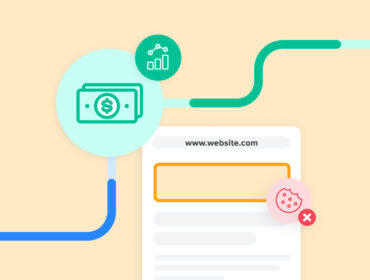Zero-party data: What is it?
Brace yourself — there’s a new buzzword giving programmatic players anxiety about their data strategies: zero-party data. The industry has barely let out its collective sigh of relief over the delay in third-party cookie deprecation before having to sort out a new type of audience data. But, don’t fret! While zero-party data might be a novel term, it’s not a brand new concept.
In this blog post, you’ll get a refresher on how:
- Businesses secure and use different types of audience data
- Zero-party fits into the mix
- Gathering and using audience data is evolving

What are different types of audience data?
Now, your head might be spinning trying to keep all these different types of audience data straight. So, let’s review:
Third-party data
Third-party data is consumer data acquired by third-party data aggregators that don’t have a direct relationship with said consumers. Instead, these third-party data aggregators compile insights across various data sources and use models to attribute behaviors or characteristics to general audiences. While third-party data tends to be the least accurate when used for personalization, it can be helpful when:
- Targeting a broad audience in campaigns focused at the top of the marketing funnel.
- Combining it with your first-party audience to refine targeting in a given channel or context.
- Building customer profiles with first-party data.
Second-party data
Second-party data is generally acquired through marketing partnerships and non-competitive resources to the benefit of both parties. For example, an agency that advises many CPG brands may partner with a publisher specializing in home & garden-related content to find overlapping audiences to improve campaign performance across publisher properties. Both partners benefit from sharing their audiences because they offer complementary services or products to a similar set of consumers.
First-party data
First-party data is the data you acquire by doing business with someone. For example, if you’re a publisher, you’re likely collecting information about how readers engage with your website and email newsletter. If you’re a brand marketer, you’re likely collecting information about what your customers and when. These insights are unique to your business because they reflect the customers who directly use your products and services, informing everything from your marketing strategies to the products you choose to sell.
Zero-party data
Zero-party data is information intentionally provided by customers. This data can be email subscription preferences, product alerts, or information they provide in a survey or questionnaire.
Coined by Forrester Research in early 2019, “zero-party data” implies there’s a newer, more direct source of data to tap into. But this isn’t actually what the term zero-party data represents. Instead of thinking of zero-party data as a unique set of data, take it for what it is: A valuable subset of your first-party data provided by your customers because they’re motivated to give you that insight.

Evolving how we collect and use data
You can use your first-party data, like information about how customers use your website, app, newsletter, or other products to build hypotheses about your customers. These hypotheses can help inform decisions and opinions that drive business growth. While first-party data can help you draw conclusions or formulate ideas about your customers, it should not be confused with explicitly declared information about your customers. On the other hand, zero-party data is a type (or subset) of first-party data provided by your customers, willingly and transparently, that explicitly tells you more about your customers and their interests. By using implied and declared insights, you can supercharge your advertising campaigns and customer experience.
The American lingerie company, ThirdLove, has nailed how they weave zero-party data into their first-party data strategy. With their Fitting Room, ThirdLove invites consumers to share why they’re shopping for a new bra. Doing so allows ThirdLove to dig deeper into purchase motivations vs. which products consumers simply looked at on their site. With the Fitting Room, ThirdLove learns what types of products their consumers seek, how competitors’ products have failed them, and their style preferences. The shopper willingly gives this information to ThirdLove, who then uses it to curate an appealing product list for them. Talk about a transparent and immediate value exchange!

It’s YOUR party; you can do what you want to (responsibly)
As data sources and privacy regulations evolve, building a data strategy that suits your needs requires that you understand the differences between the data at your disposal, how to put it to use, and potential partnerships.
LiveIntent can help you leverage email as part of your data toolkit. Whether you’re a publisher looking to grow your newsletter subscriber audience or a marketer looking to acquire and retain customers, we’ve got you covered.
In the new world, where third-party data will be scarce and second-party data will be less accessible, first-party data will remain clutch. So, ensure you’re using all of the tools at your disposal to collect and use that data responsibly. Whether you call it first-party or zero-party data is up to you. Just remember, the experience you provide as the “party” host is what will inevitably attract or turn customers away.


